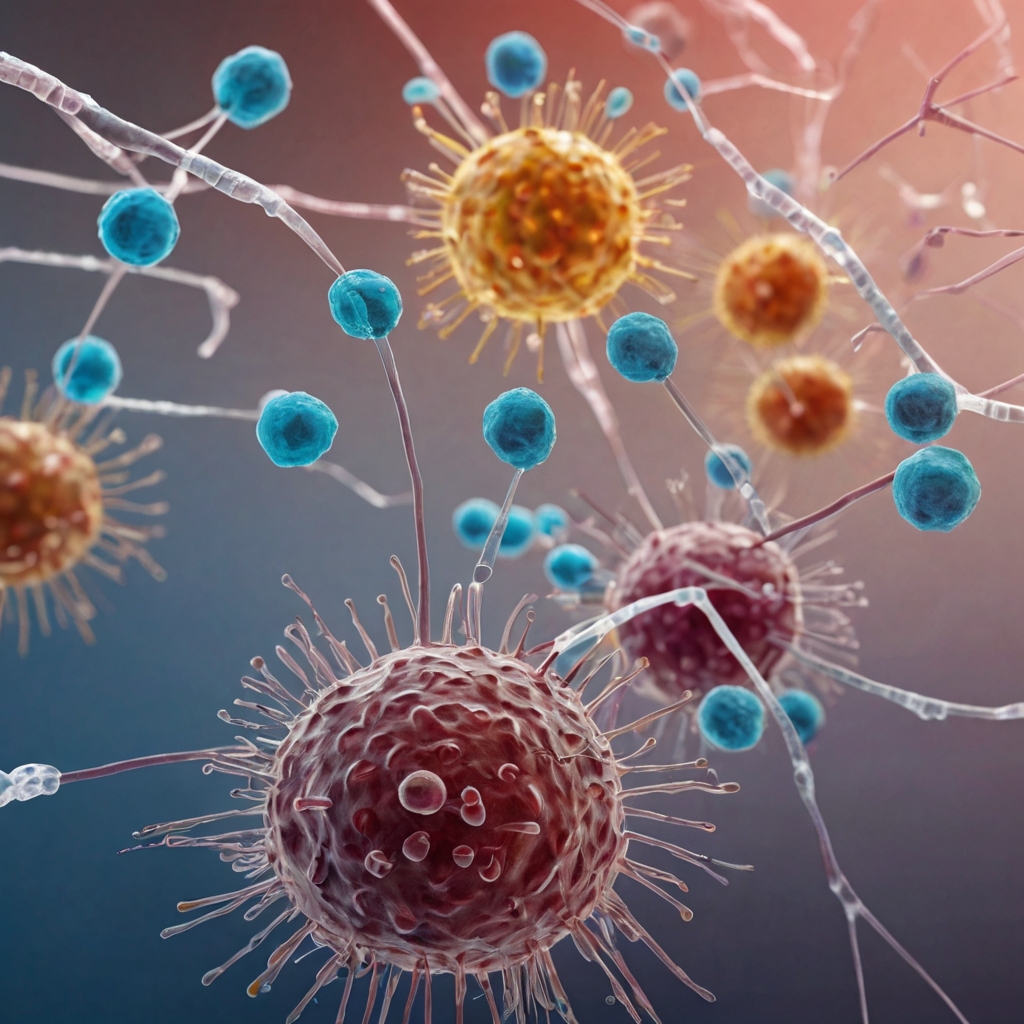The Impact of In Vitro Drug Resistance Models on Cancer Therapy Development

Table of Contents:
- Introduction to In Vitro Drug Resistance Models
- Significance of Drug Resistance in Cancer Therapy
- Development of In Vitro Models
- Key Benefits of Utilizing In Vitro Models
- Challenges Faced in Current Models
- Interdisciplinary Approaches in Enhancing In Vitro Models
- Future Trends and Innovations
- Conclusion
Table of Contents
- 1 Introduction to In Vitro Drug Resistance Models
- 2 Significance of Drug Resistance in Cancer Therapy
- 3 Development of In Vitro Models
- 4 Key Benefits of Utilizing In Vitro Models
- 5 Challenges Faced in Current Models
- 6 Interdisciplinary Approaches in Enhancing In Vitro Models
- 7 Future Trends and Innovations
- 8 Conclusion
Introduction to In Vitro Drug Resistance Models
In vitro assays are pivotal in oncology, especially in understanding and combating drug resistance. These sophisticated laboratory techniques allow researchers to delve into the genetic and cellular underpinnings of how cancer cells develop resistance to therapies. By creating controlled environments that replicate the conditions under which cancer cells fail to respond to treatment, these assays provide crucial insights. For instance, using in vitro assays has allowed scientists to map out complex drug resistance mechanisms, leading to the identification of novel therapeutic strategies. As a result, these models are essential for current research and set the groundwork for future innovations in cancer therapy.

Significance of Drug Resistance in Cancer Therapy
Drug resistance in cancer therapy is a formidable challenge, often leading to treatment failure and recurrence of the disease. This resistance can arise from multiple factors, including genetic mutations, drug target alterations, and cellular mechanism changes that affect drug uptake and efflux. In vitro drug resistance models enable researchers to simulate these scenarios efficiently. By observing how cancer cells adapt in a controlled setting, scientists gain valuable knowledge crucial for advancing therapeutic development. This understanding is imperative for developing more effective, long-lasting treatments that can outmaneuver these formidable cancer defenses, leading to improved survival rates for patients battling resistant forms of cancer.
Development of In Vitro Models
Over the years, the development of in vitro models has been marked by significant advancements that have made them more relevant and applicable in real-world research settings. Initially, these models primarily consisted of two-dimensional (2D) cell cultures, which provided a basic understanding of cancer biology. However, the field has progressed to include three-dimensional (3D) cultures and organ-on-chip technologies that mimic the tumor microenvironment better. These innovative approaches allow for more accurate testing of drug responses and resistance mechanisms. As these models become increasingly sophisticated, they offer a more comprehensive platform that reflects human tumors’ biological and physiological complexity, thereby enhancing the fidelity and translatability of preclinical research findings.
Key Benefits of Utilizing In Vitro Models
The deployment of in vitro models in cancer research offers numerous advantages. First and foremost, these models can significantly accelerate the drug discovery process by facilitating high-throughput screening of new compounds. This rapid testing is crucial in identifying potential drug candidates that can overcome existing resistance mechanisms. Furthermore, in vitro models provide a cost-effective alternative to traditional in vivo studies, reducing the financial burden associated with large-scale drug testing. From a personalized medicine perspective, these models also allow for the customization of treatment protocols tailored to individual patient profiles, thus enhancing the specificity and efficacy of cancer therapies. Precision medicine approaches are pivotal in optimizing treatment outcomes for patients with unique genetic backgrounds and resistance patterns.

Challenges Faced in Current Models
Despite their incredible utility, in vitro models have limitations and challenges. It is difficult to replicate the intricate relationships seen in the tumor microenvironment and to take into consideration the genetic variety and diversity found in cancer patients. Moreover, while these models are excellent for initial testing, their scalability to predict clinical outcomes can sometimes be limited. This necessitates ongoing refinement to improve their predictive accuracy.
Interdisciplinary Approaches in Enhancing In Vitro Models
Interdisciplinary collaboration is critical in advancing the efficacy and accuracy of in vitro drug resistance models. Integrating fields such as bioinformatics, materials science, and systems biology offers new perspectives and tools for improving model designs. For instance, bioinformatics can help analyze complex datasets to identify drug resistance patterns, whereas materials science can contribute to developing better 3D scaffolds for cell culture. Systems biology provides a holistic view of the cellular environment, allowing for the construction of more comprehensive models. By leveraging expertise across various disciplines, researchers are better equipped to address the shortcomings of current in vitro models, paving the way for significant breakthroughs in cancer therapy development.
Future Trends and Innovations
Looking ahead, the integration of artificial intelligence (AI) and machine learning with in vitro models holds immense potential for revolutionizing cancer therapy development. AI can analyze vast datasets generated by these assays, uncovering hidden patterns and predictive markers of drug resistance. The advent of CRISPR and other genomic editing tools is poised to enhance the accuracy of in vitro models by precisely replicating resistance mechanisms within cancer cells. Such advancements promise to yield more accurate preclinical models that can predict clinical outcomes with greater reliability. As these innovations continue to evolve, they are set to enhance the role of in vitro assays in discovering and optimizing next-generation cancer therapies.
Conclusion
The impact of in vitro drug resistance models on cancer therapy development is profound, offering critical insights into the mechanisms behind drug resistance and facilitating the discovery of effective therapeutic strategies. These models have the potential to become more and more important in determining the direction of oncology research as they develop. By driving the development of innovative and tailored treatments, they offer renewed hope to patients globally. In vitro tests have the potential to completely transform cancer treatment with further technological and methodological developments, opening the door to better results and a higher standard of living for individuals afflicted by this difficult illness.

